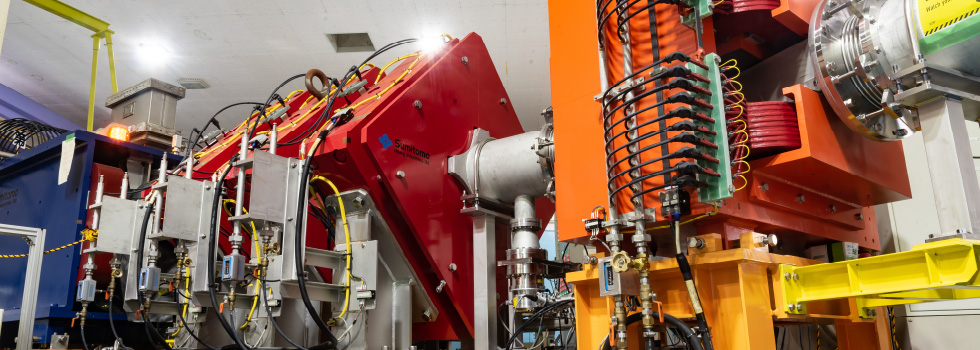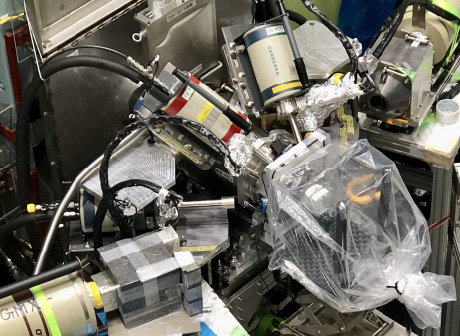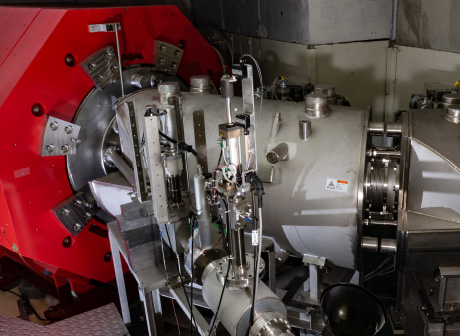
Pioneering new scientific and applied uses of elementary particle muons
Osaka University plays a very important role in promoting fundamental and applied muon research. The University not only has Japan’s only continuous muon beam facility, MuSIC, but also has many leading researchers who are pioneering research using muons and have already achieved a variety of results. In this project, Osaka University’s expertise and facilities will be coordinated and developed, and new measurement systems and methods will be developed in cooperation with academic institutions and private companies in Japan and abroad, applying the latest radiation detection technology. In this way, Osaka University will take the leadership in pioneering and promoting scientific and industrial applications of cutting-edge muon technology.
FEATURE
We will promote new scientific and applied research using continuous muon beams, which excel at high-statistics and detailed studies.
We will also promote deployment using cosmic-ray muons that fall to the ground.
It is not limited to nuclear and particle physics, earth and space, and radiochemistry, but also covers a wide range of fields, including archaeology, cultural heritage science, and industry.
We will develop new systems and measurement methods based on the latest radiation detection technology for nuclear and elementary particle physics.
RESULTS
Research progress
Non-destructive analysis of valuable cultural materials by muonic X-ray analysis
As an example of our achievements, we would like to introduce our development of a non-destructive elemental analysis method using muons.
Negatively charged muons behave like heavy electrons in matter. Negatively charged muons stopped in matter orbit the nucleus in the same way as electrons, and muonic X-rays with energy specific to the nucleus are emitted in the process of transition from the outer orbit to the ground orbit. Nondestructive elemental analysis using these muonic X-rays has attracted a great deal of attention in recent years. In 2021, we succeeded in identifying the components of a drug left by Koan Ogata, who was active in the late Edo period. By irradiating the drug through glass with muons while it was sealed in a medicine bottle that could no longer be opened, we were able to determine that the drug was mercury chloride(I). There are high expectations that this muonic X-ray analysis method can be applied to various fields of analysis in the future.
Press release: https://resou.osaka-u.ac.jp/ja/research/2021/20210317_1

Further development
Development of advanced muon technology
First, we will increase the intensity of the continuous muon facility Research Center of Nuclear Physics on the Suita Campus and develop various fundamental and applied sciences utilizing the continuous muon beam in cooperation with researchers in various fields. In muonic X-ray analysis, we will complete a three-dimensional elemental mapping system and promote nondestructive analysis of valuable materials in archaeology and cultural property. In cooperation with museums, we are also developing a new system for muonic X-ray analysis using cosmic-ray muons at museums. We are also working on internal investigations of large-scale structures using cosmic ray muons, and plan to develop new technologies in cooperation with various people in both academic and industrial fields.
